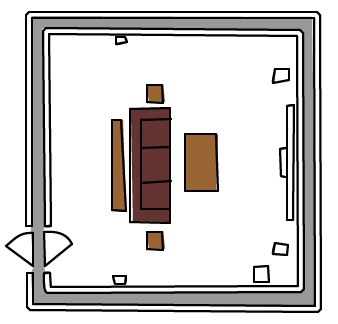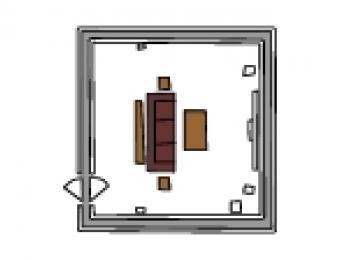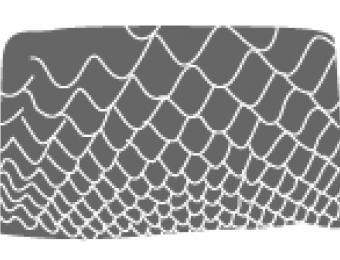
What are double brick walls?
A double brick wall is a wall with two layers of brickwork, often separated by an insulating layer. The thickness and mass of the brick work to reflect sound back at the source with minimal vibration occurring, even at lower frequencies. With the integration of a soundproof layer between the brick layers, sound is all but prevented entirely from passing through the wall.
Double brick walls are especially common as party walls to separate adjoining townhouses and duplexes, and are frequently used to construct the outer walls of modern homes.
What is a 'room within a room (RWAR)'?
A room-within-a-room (RWAR) is a method of achieving audio decoupling, the separation of the inner frame of a room from the main frame of the house. By erecting a secondary inner wall, floor and ceiling which is detached from the rest of the house, sound is unable to escape or penetrate through the layers of air, soundproofing insulation and building materials, making this arguably the most effective method of soundproofing.
Room within a room setups take care of a great deal of troublesome mechanical sound transmission and are especially effective where low frequencies are concerned. Obviously, however, creating a completely decoupled room inside your home is no small feat.
How do double bricking and RWAR help to improve soundproofing?
Double brick walls prevent sound from travelling through by virtue of sheer weight and mass. The wall is very heavy and any sound trying to send a vibration along it has to be substantial to move anything but the next brick along. The air or insulating layer between the bricks provides a further barrier for the sound to transmit through, and all but the very loudest of sounds is blocked from reaching either side of the wall.
RWAR applications work on much the same principle, but apply it to the entire room. By adding a second layer in between the main frame of the house and the interior of the room, any sound trying to pass through will meet a number of layers of soundproofing and air, weakening the sound wave to the extent that it decays very rapidly.
Relative cost and effectiveness
Double brick walls are common in many brick homes, so they're likely to be already factored into your building costs. Double bricking costs more than a single layer of bricks, but since the only time you can have this done is at the time of construction, it is well worth considering.
RWAR applications will rarely apply to more than one room in a home, but cost substantially more than fitting out an average room since you will need to pay for the additional materials and labour. These can be retrofitted though, so can be put in later if the budget doesn't allow for it while you're building or when buying a pre-built dwelling. Keep in mind that any electrics will need to be specially relocated by a qualified electrician.
Shortcomings, advantages and specific applications
Double brick is very commonly used in the exterior of a house’s walls, and can also be added in later to subdivide. It is less commonly found in interior walls however, so you may find that while your walls are great at blocking traffic noise, the stereo from your teenager’s bedroom will still annoy everyone in the house.
RWARs are fairly specialist setups, and are typically used in home theatres and recording studios where the transmission of noise (either in or out of the room) needs to be stopped entirely. The biggest drawback to RWAR setups is that they're not cheap. The size of the room and choice of materials will significantly affect the final price for this kind of setup.





